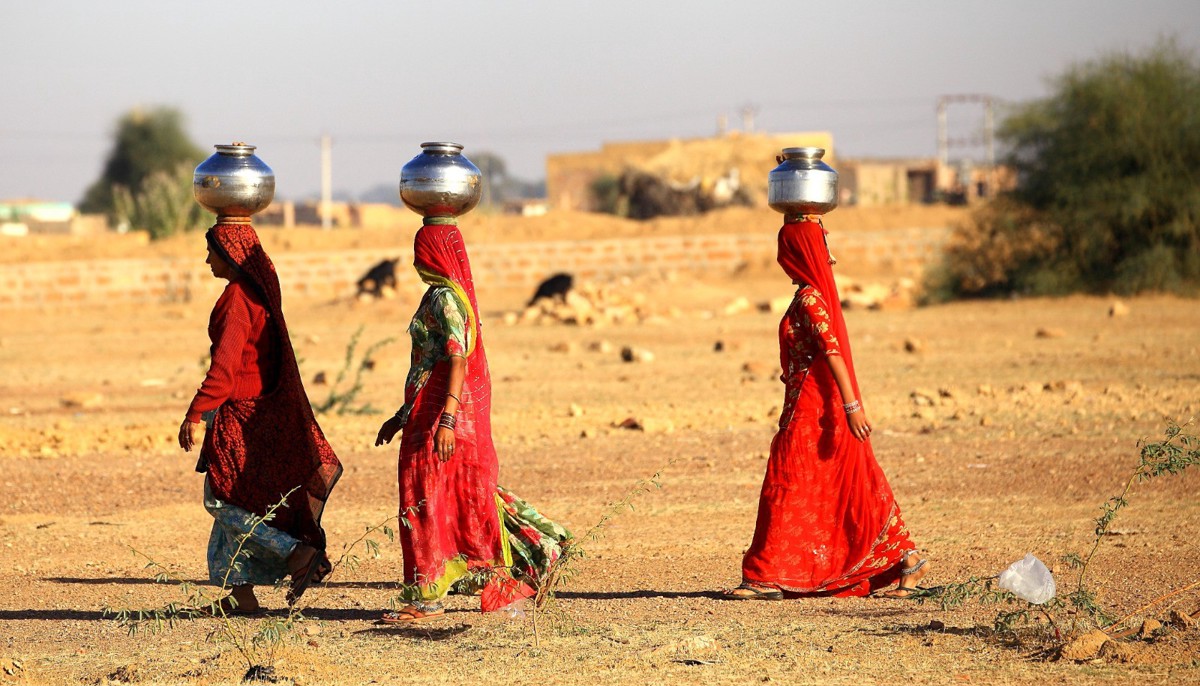
26 October 2022
In ancient literature, young women are portrayed as the water bearers and are often encountered at the community well. They draw water and serve their families, visitors and flocks.
The Old Testament tells how Rebecca, Rachel and Zipporah were all discovered at their wells as the perfect wives for Isaac, Jacob and Moses respectively.
Then, there was Miriam’s Well, which she carried for 40 years of wandering in the desert following the Israelites’ Exodus from Egypt. According to Greek mythology, Naiads are female spirits or nymphs, presiding over fresh water sources. Ancient literature frequently describes water-bearing women carrying clay jugs or animal skin pouches to transport water on their heads, hips or shoulders…a sight relevant today in places lacking water infrastructure.
The Images are More Romantic than the Reality
There may be something romantic about a painting of a woman carrying a water jug…as well as the belief in a goddess of fresh water. However, the reality is harsh. A study published by UNICEF and the World Health Organization (WHO) reports the following:
· 2.1 billion people globally must collect water for their families daily
· 263 million people have access to “safe” water sources, but must spend > 30 minutes walking or standing in line to collect their water
· 159 million people get their water from unsafe sources, such as rivers, streams, and ponds, usually taking > 30 minutes to collect
· Bringing water is disproportionately the responsibility of women and girls
In UNICEF’s 2017 study of 25 sub-Saharan African countries, it was estimated that women and girls spent 16 million hours collecting water daily. A different study in Kenya reported that women dedicate an average of 4.5 hours bringing water to their families each week; most women do so in fear for their safety (77%), in addition to the anguish of being unavailable to care for their children while doing so (24%).
And, water is heavy! The World Health Organization suggests that the daily need for drinking, cooking and washing is 20–50 liters/kilograms (5-13 gallons per 44–110 lbs) of water per person! None of the statistics mention how many of the women and girls (under 18) fetching water are pregnant, sick or injured, or how many are raped or robbed along the way….
It is impossible to quantify the time women spend caring for their children or other family members made ill by consuming poor-quality water. The direct impact on women’s lives, as a result of carrying water daily to their families, is immeasurable. They are unavailable to do the things that would lift them out of poverty and improve their quality of life, such as education, employment, caring for their children or their own health…or resting their sore backs, necks and shoulders.
In a promotion of its 6K Walk (or run) for Water on May 16, 2020, World Vision translates the time women around the world invest in collecting water:
“Every day, women and girls spend 200 million hours walking to collect water for their families. That’s 8.3 million days. More than 22,800 years.
The “K” stands for kilometers. 6K, a little more than 3.7 miles, is the average distance round trip women and children in the developing world walk for water — water that is often contaminated with life-threatening diseases.”
Burden on the Backs of Children
An estimated 3.36 million children and 13.54 million adult females were responsible for water collection, when collection time is more than 30 minutes, per a study of sub-Saharan countries.
The obvious tragedy of this picture is two-fold: children must forgo or arrive late for school in pursuit of providing drinking water to their families and community, and they bear a significant physical burden on their small and growing bodies.
A study conducted in Malawi in Southern Africa considered the impact of water carrying on 9–18 year-old children and found that more than one-third of all children suffer pain or health problems, as a result of their burdens.
There are Better Solutions
Today, there are more technologies than ever to bring water to those who need it. One, in particular, is called Atmospheric Water Generation (AWG) or more simply: Water-from-Air solutions. There are numerous technologies and methods for extracting water from the air’s natural humidity, and the success of each varies, based on environmental conditions, the technology used, and the energy required to make the process work.
TIP: Check out the website of The Water Bearers, a non-profit that brings clean water solutions to women in global locations of water scarcity. Take special note of their page on Water Projects.

